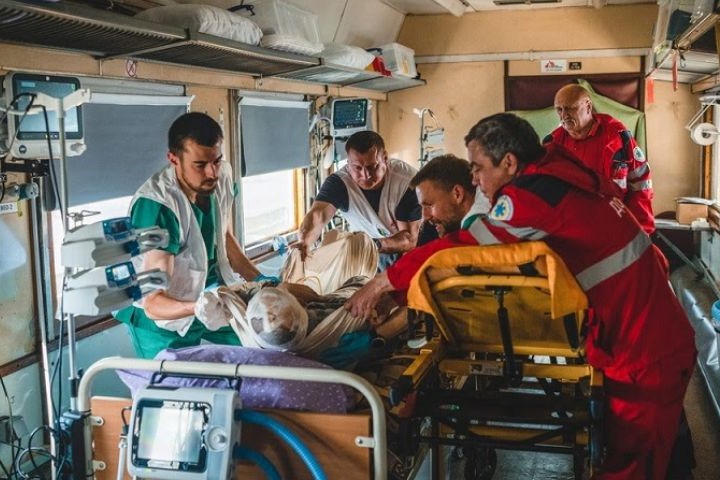
Blast injuries: how to intervene on the patient's trauma
Blast injuries are caused by explosions which release blast waves, blast winds, ground shock, and heat. Other mechanisms of injury are generated from blasts, including penetrating injuries from shrapnel, radiation, and biological exposure
Blast waves cause disruption of major blood vessels, rupture of major organs, and lethal cardiac disturbances when the victim is close to the blast. Blast winds and ground shock can cause the collapse of buildings and cause trauma.
Mechanisms of Blast Injuries
PRIMARY BLAST INJURIES:
When the explosion occurs, a wall of air pressure quickly expands outward in all directions.
Anyone close to the explosion will be struck by the pressure wave causing blunt injuries to the inside of the body, especially to hollow organs.
Body system affected:
- lungs,
- GI tract, and
- the middle ear.
Types of injuries include
- blast lung (pulmonary barotrauma),
- tympanic membrane rupture and middle ear damage,
- abdominal hemorrhage and perforation,
- globe (eye) rupture, and
- concussion or TBI without physical signs of head trauma
SECONDARY BLAST INJURIES:
Immediately following the primary wave is all the debris from the explosion.
It may be the remainder of the original container, shrapnel, glass or other materials from nearby structures.
This debris strikes the victims, causing penetrating injuries.
Any body system could be affected.
Types of injuries include: penetrating or blunt injuries to any area of the body.
TERTIARY BLAST INJURIES:
If the force of the explosion is great enough, victims can be thrown to the ground (ground shock) or into other solid objects, causing additional blunt and penetrating injuries.
Any body system can be affected. Types of injuries include: penetrating or blunt injuries to any area of the body. You could also see amputations caused by blast wind.
QUARTERNARY BLAST INJURIES:
These injuries occur from events that happen during the explosion and include all explosive-related injuries or illnesses not caused by primary, secondary, or tertiary mechanisms.
Any body system can be affected.
Types of injuries may include
- burns,
- inhalation injuries,
- crush injuries,
- closed and open head injuries,
- asthma,
- COPD or other breathing problems,
- angina,
- hyperglycemia, and
- hypertension.
MANAGEMENT
Management considerations for blast injuries include multi-system trauma care, immediate transport to the closest appropriate facility, and multi-casualty care.
Read Also:
Emergency Live Even More…Live: Download The New Free App Of Your Newspaper For IOS And Android
What Should Be In A Paediatric First Aid Kit
Ukraine Under Attack, Ministry Of Health Advises Citizens About First Aid For Thermal Burn
Electric Shock First Aid And Treatment
RICE Treatment For Soft Tissue Injuries
How To Carry Out Primary Survey Using The DRABC In First Aid
Heimlich Maneuver: Find Out What It Is And How To Do It
The Patient Complains Of Blurred Vision: What Pathologies Can Be Associated With It?
A Tourniquet Is One Of The Most Important Pieces Of Medical Equipment In Your First Aid Kit
12 Essential Items To Have In Your DIY First Aid Kit
First Aid For Burns: Classification And Treatment
Compensated, Decompensated And Irreversible Shock: What They Are And What They Determine
Burns, First Aid: How To Intervene, What To Do
First Aid, Treatment For Burns And Scalds
Emergency Response In Bomb Blast – A Scenario EMS Providers Could Face
Italy: Father And Son Found Missing After Explosion Tragedy In Ravanusa (Ag)


